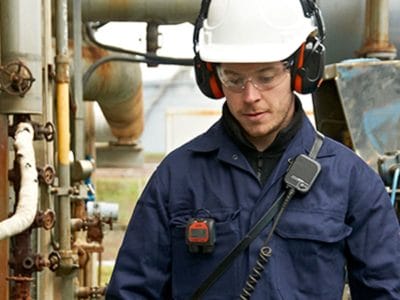
Effects Of Humidity In Volatile & Aromatic Compound Detection
The impact humidity moisture has on PID technology
A common frequently asked question is “can humidity interference affect my PID detector results?” Like many sensors and measurement instrumentation, traditional PIDs can indeed be affected by the environmental conditions i.e. dust, dirt and in particular, humidity. The major producers of oil & gas are located in the Gulf States and in or close to the Gulf of Mexico, which are of course areas of high temperature and high humidity.
Humidity Effects On PID Instruments
Humidity is a natural phenomenon and is the amount of water vapour present in the atmosphere or in a gas. Water vapour itself is the gaseous state of water and is invisible to the human eye, though we have all felt how uncomfortable high humidity can be.
Humidity comes from water evaporating from lakes and oceans and since warmer water evaporates more quickly, you find the most humid regions closer to warm bodies of water like the Red Sea, the Persian Gulf, and Miami, Florida.
Rather than absolute humidity, weather forecasters as well as engineers and scientists talk about relative humidity (RH) which is a ratio, expressed as a percentage, of the amount of atmospheric moisture present relative to the amount that would be present if the air were saturated. Since the latter amount is dependent on temperature, relative humidity is a function of both moisture content and temperature.
”Joel Sobel, an SVP with Accuweather offers a simple explanation: Think of the atmosphere as a sponge that can hold a fixed amount of water, let’s say a gallon (4 litres) of water. “If there is no water in the sponge, then the relative humidity would be zero.” Saturate the sponge with half a gallon of water; half of what it is capable of holding and that relative humidity climbs to 50 percent.
“The amount of moisture that the atmosphere can hold relates directly depends on the temperature.” Think of a rise in temperature like an increase in sponge size. A sponge that is half saturated with water is at 50 percent humidity. Now,
PBS News Hour
increase the size of the sponge without adding more water. The relative humidity decreases because the bigger sponge is capable of taking on more moisture, but the same amount of water remains.
Problems With Humidity In Gas Detectors
Like many sensors and measurement instrumentation, traditional PIDs can be affected by the environmental conditions such as those found in process
environments, in particular dirt and humidity. Humidity is a naturally occurring phenomenon and is present in the atmosphere and gasses. The presence of humidity can disrupt PID measurements in two ways leading to false low or conversely high readings.
The cause of low readings is because water vapour absorbs the photons released by ionisation within the sensor as can be seen in the simplified cross section of a PID sensor (Figure 1 below).
 Figure 1: Cross section of a PID sensor with and without water vapour present
Figure 1: Cross section of a PID sensor with and without water vapour present
Calibration, Maintenance & Purchase Considerations
In daily use manufacturers recommend field calibration of their PIDs with Isobutylene, which is an excellent surrogate calibration gas because the response of most VOCs is reasonably close to, and consistent with this gas. It is also inexpensive and easily obtainable.
In daily use manufacturers recommend field calibration of their PIDs with Isobutylene, which is an excellent surrogate calibration gas because the response of most VOCs is reasonably close to, and consistent with this gas. It is also inexpensive and easily obtainable.
The following are recommended ‘must have’ features;
- be small and lightweight so as not to burden the wearer – the personal PID has to be worn in the breathing zone and is ‘competing’ for space with gas and radiation detectors, portable radios and other monitoring instrumentation such as noise dosimeters and dust sampling heads/pumps.
- offer a choice of sensor lamps e.g. 10.6 eV for general use or 10 eV for monitoring total aromatic compounds (TAC) including benzene.
- have a high sensitivity (depending on the lamp) i.e. minimum 10 ppb, ideally 1 ppb.
- have a high range of 5000 ppm to accommodate the high levels potentially experienced during plant turnaround.
- have visual, audible and vibratory alarms.
- be capable of 1 second logging of actual exposure for later download and analysis which would highlight areas of concern and help identify
where fixed systems could be situated.
Download our FREE Guide
“Humidity Effects On PID Instrument”
The humidity effects on pid instrument guide which can be downloaded below provides the reader with an in-depth balance of knowledge to outline the vital impact that humidity can have on older PID designs/technology. Like many sensors and measurement instrumentation, traditional PIDs can indeed be affected by the environmental conditions i.e. dust, dirt and in particular, humidity. When compared to newer PID models the addition of a third, fence electrode overcomes the possibility of incorrect high readings since it behaves as a conductive break and stops the excess current flow caused by the presence of high humidity which would otherwise lead to a false positive.















